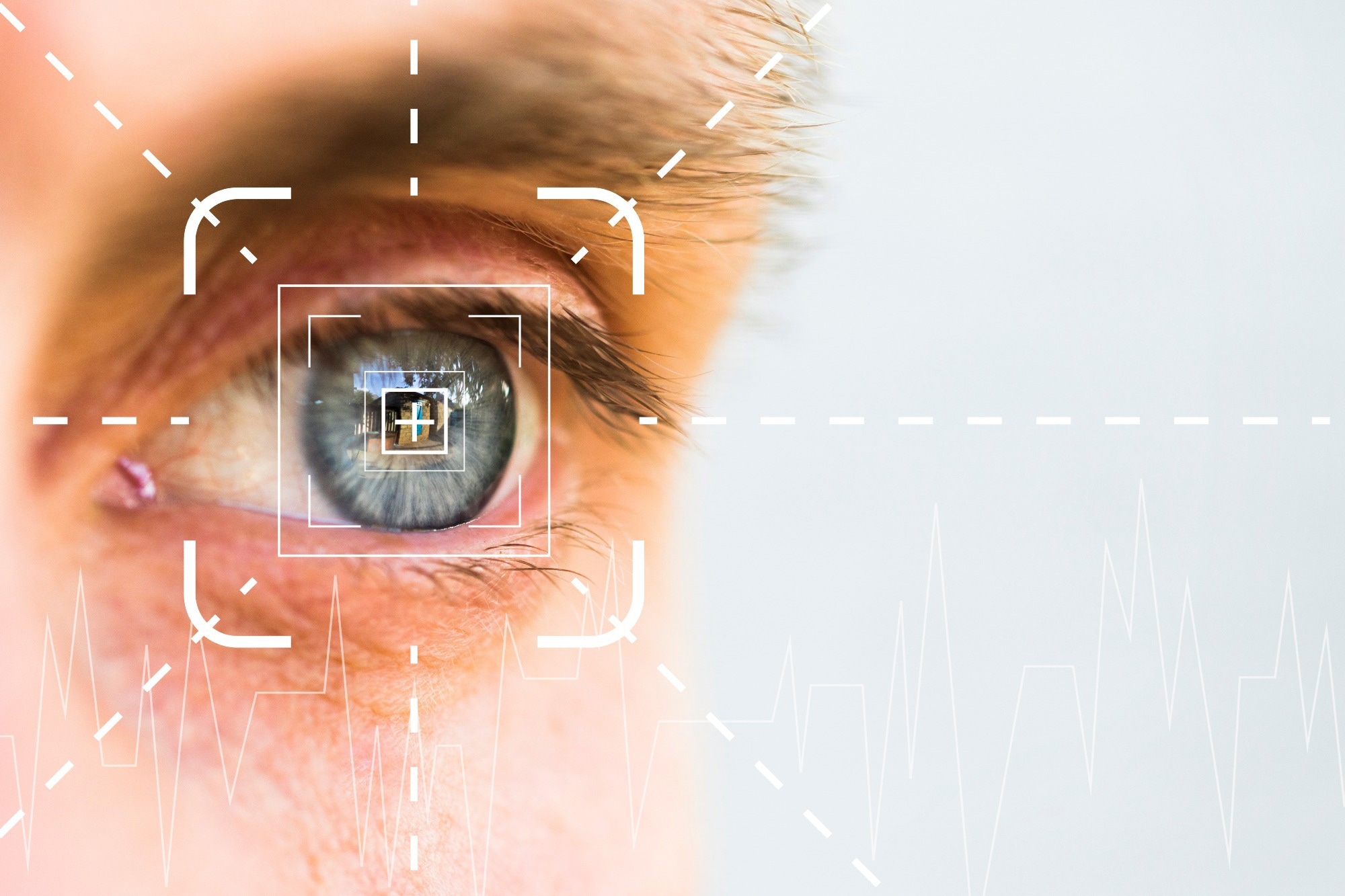In a recent publication in the Journal of Intelligence, researchers focused on psychometric AI, merging AI and psychological measurement to enhance accuracy, efficiency, and objectivity.
 Study: Decoding Emotional Intelligence with AI: Enhancing Accuracy through Eye-Tracking. Image credit: MaximP/Shutterstock
Study: Decoding Emotional Intelligence with AI: Enhancing Accuracy through Eye-Tracking. Image credit: MaximP/Shutterstock
Background
The accelerating advancement and integration of AI technology across industries have yielded remarkable transformations, extending to the field of psychometrics. This evolution, known as psychometric AI, has demonstrated noteworthy potential for enhancing measurement precision, efficiency, and objectivity through AI techniques. In particular, AI methods hold promise for reducing human biases and improving measurement objectivity. While prior work has explored AI's efficacy in measuring personality traits, emotional intelligence (EI) remains understudied. EI, involving understanding and managing emotions, holds significance in various realms, including management and education. To address this gap, a study is being undertaken to gauge AI's accuracy in measuring EI using eye-tracking technology.
Experimental design for measuring EI
This study adds to the emerging field by employing psychometric AI to measure emotional intelligence, representing a systematic assessment of machine learning model accuracy. Researchers employed an experimental design involving two sessions: a survey session and an eye-tracking session, with a randomized order to counteract potential order effects. In the eye-tracking session, participants completed experimental tasks in two blocks featuring emotional facial expressions. The survey session included self-reported EI measures and demographic information. A sample of 218 adults, with a mean age of 26.79 years, around 59 percent of them female, from a Northeast United States university and campus community, participated. Ethnic backgrounds were diverse, with 28.9 percent Asian or Pacific Islander, 23.9 percent Black, 19.3 percent Hispanic or Latino, 15.6 percent Caucasian or White, and other categories. Ethical approval was obtained, and participants received compensation.
Two commonly used EI assessments were administered: the short form of the Trait Emotional Intelligence Questionnaire (TEIQue-SF) and the Wong and Law Emotional Intelligence Scale (WLEIS). The WLEIS, consisting of a 16-item questionnaire evaluated on a seven-point Likert scale, assesses self-emotional appraisal (SEA), appraisal of others' emotions (OEA), utilization of emotions (UOE), and emotion regulation (ROE). Its reliability was 0.88. The TEIQue-SF, a concise version of Petrides' measure, consists of 30 items across dimensions including well-being, self-control, emotionality, and sociability, with a reliability of 0.89.
The experimental tasks employed emotional facial stimuli. One block presented simultaneous expressions, while another depicted a crowd with varying happy-to-angry expression ratios. An EyeLink Portable Duo eye-tracking system recorded participants' eye movements. The analysis comprised three steps: generating eye-tracking measures, data management, and utilizing classic machine learning models such as Naïve Bayes, support vector machines, k-nearest neighbors, decision trees, and random forests to predict EI scores, considering different percentiles and interest periods, resulting in 1470 machine learning runs.
Performance of AI models for measuring EI
The experiments revealed that there are substantial correlations between the WLEIS and TEIQue-SF tests. Correlations among their facets varied moderately. Relationships between the WLEIS facets and TEIQue-SF facets ranged from 0.39 to 0.67, while the WLEIS total score and TEIQue-SF facets showed correlations between 0.43 and 0.67, all of which are statistically significant. The machine learning identification accuracy was investigated across 1470 runs, revealing a "V"-shaped pattern across percentile dichotomies.
Notably, the non-linear support vector machine with a radial kernel function excelled at extreme percentiles. The machine learning performance varied across models. No consistent pattern emerged in terms of EI facets affecting machine learning accuracy, even when considering interest periods. The data amount's impact on accuracy was minimal across 10, 5-, and 2-second intervals. Surprisingly, AI models demonstrated decent accuracy with as little as two or five seconds of eye-tracking data, challenging classic test theory's principle of data volume and improving measurement quality. Eye-tracking features predictive of EI were explored, showing distinct associations for different facets.
The study unveiled mixed outcomes regarding the influence of EI facets and measures on classification accuracy, with unclear patterns emerging. The finding indicated that numerous eye-tracking measures strongly predicted EI scores, aligning with established attentional bias trends. As eye-tracking and AI techniques become more accessible, this research offers practical implications for integrating the technologies to deepen our comprehension of psychological phenomena.
While this study presents innovative insights, it has some limitations, such as its focus on trait EI, binary classification, and certain stimulus types. Future research avenues encompass exploring ability EI, multiclass classification, deep learning, and expanding stimulus diversity.
Conclusion
In summary, the current study delves into the emerging field of psychometric AI, which combines AI techniques with psychometric testing, focusing on emotional intelligence measurement. It rigorously evaluated the accuracy of various ML models through 1470 runs, finding AI capable of high accuracy with just two or five seconds of eye-tracking data. The research identified predictive eye-tracking features in line with existing literature, advancing psychometric AI for EI measurement and offering practical implications for management and education applications.